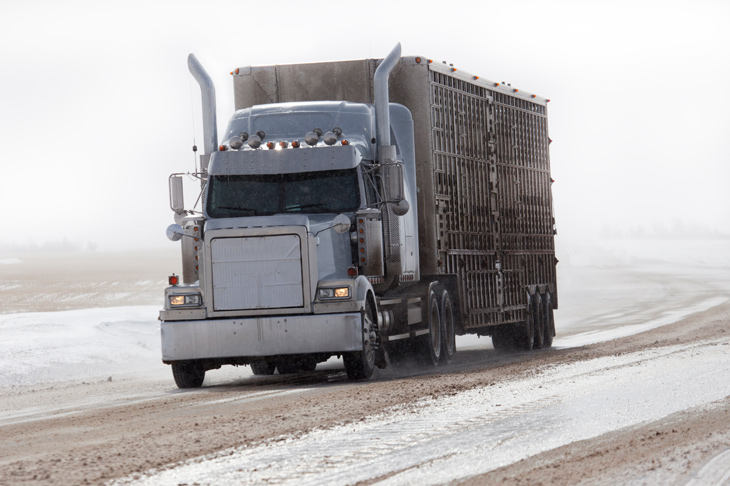Truck Driving Tips to Stay Safe This Winter

As our nation's professional truck drivers know, operating a tractor-trailer demands total attention in any weather condition. But as winter approaches, that challenge is even greater. Proper skills, techniques, and preparation can make the difference between arriving safely at your destination and encountering misfortune on the road. Here are essential winter driving tips to help make your journey smoother and safer, even when facing harsh weather conditions.
1. Practice Caution and Slow Down.
Many winter driving accidents result from excessive speed. The posted speed limit may be safe under normal conditions but is often too fast for snow- or ice-covered roads. Reducing speed gives you greater control and more time to react to unforeseen circumstances.
2. Maintain a Safe Following Distance.
Leave ample space between your truck and the vehicle in front of you—1/4 mile or more. Avoid traveling in “packs” where sudden stops or slides from other vehicles can quickly impact you.
3. Brake Smart.
Avoid using the “Jake” or engine brake on icy roads, and refrain from heavy foot braking. Keeping the truck and trailer as straight as possible when braking helps avoid jackknifing, especially if your trailer is empty.
4. Turn Off Cruise Control.
In icy or wet conditions, cruise control can unexpectedly engage, causing a dangerous loss of control. Drive manually to ensure you’re responsive to changing road conditions.
5. Stay Focused on the Road, Not the Lights.
If you’re following the tail lights of the vehicle in front of you in heavy snow, you’re too close. Avoid tailgating to maintain visibility and avoid the risk of unintentionally following another vehicle off the road.
6. Conduct Thorough Pre-Trip Inspections.
Before you start, ensure your defroster, heater, wipers, headlights, running lights, brake lights, taillights, and other critical safety systems are working properly. Check fluid levels and carry extra supplies, such as windshield washer fluid, airline deicer, and a spare fuel filter. Jumper cables and a fuel additive are also helpful.
7. Keep Your Truck Clean.
Before and during your trip, remove snow and ice from your truck’s lights, windows, and mirrors. Be particularly mindful of LED lights, which may not generate enough heat to melt accumulated snow, reducing visibility to others on the road.
8. Prepare a Winter Survival Kit.
Pack your cab with essential cold-weather gear, including:
- Clothing: Insulated jacket, hat, gloves, and boots.
- Emergency Supplies: Heavy blanket, flashlight with extra batteries, charged cell phone, matches or a lighter, and a large candle for heat if necessary.
- Medication: An extra supply of any critical medications.
- Food and Water: Nonperishable snacks and bottled water.
- Safety Equipment: Reflective vest, tarp, shovel, tire chains, and jumper cables.
- Basic Mechanical Kit: A few tools to handle minor adjustments or repairs.
9. Know When to Stop.
If weather conditions become too severe, remember that no load is worth risking your safety. Pull off the road at a safe location and avoid stopping on the shoulder, as other drivers could mistakenly think your truck is still on the road.
Many winter driving tips come down to common sense, but these can be easy to overlook when under stress. Taking time to prepare, plan, and practice these safety tips can make all the difference. Remember, prioritizing your safety and the safety of others on the road will help ensure you reach your destination smoothly, even during winter’s harshest days.
An insurance company that cares about you and insuring the things you wish to be insured.
Get a Quote> Find an Agent>

